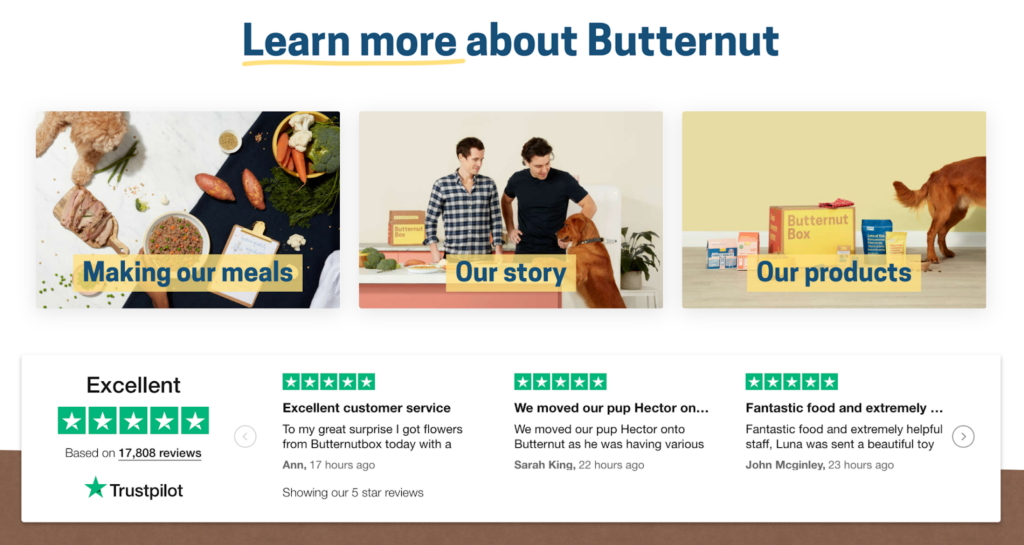
On-page SEO for ecommerce product pages is a key component of any digital marketing strategy. This is the online equivalent of your shop window and it’s ability to attract the attention of customers and entice them to buy your product.
In years gone by, SEO was often about pleasing Google and ticking off all of the on-page SEO signals that you felt made a difference to search engine algorithms, hopefully leading to better organic search rankings.
Alongside this, you needed to present the product in the best way possible so that once a potential customer arrived on your page, they immediately engaged with it and hopefully got their credit card out and made a purchase.
Now, and for a while now, these two strands of ecommerce strategy have converged and are no longer completely distinct from each other. Search engines, in particular, Google, have gotten far better at understanding what users want when they visit your website and refining their algorithm to provide search results that meet these expectations.
For example, if someone lands on your product page and immediately gets a feeling of distrust and doesn’t feel like they can hand over their credit card information, Google is often able to understand this reaction and treat your page accordingly.
Getting these things right is very important for ecommerce stores. So, let’s look at a few ways that you can do this, inspired by our cheatsheet for perfecting on-page SEO for ecommerce websites.
1. Trust signals
As we’ve discussed, it’s not enough to simply tick off a list of on-page SEO signals. You need to provide a great user experience if you want to rank pages consistently and drive sales and revenue. For ecommerce stores, this means building trust as much as possible so that someone doesn’t question whether they will receive their product or not.
Here are a few easy ways to start building trust with your customers as an ecommerce store:
Delivery details
Assuming that you’re shipping a physical product, make sure that your delivery information is easily accessible and accurate. Customers want to know what their options are for delivery in terms of timing and payment. The rise of free, next day delivery with Amazon Prime has set the standard high for all other online retailers, so be as competitive as you can be but most importantly – be clear.
If you sell products that can be returned, you should also include details of what the options are for this too. For example, most large fashion brands will allow for returns of clothing that may be the wrong size. If this is the expectation with your products, be sure to mention what your policy is.

Phone number / contact details
Most people probably aren’t going to pick up the phone to you before buying a product, but it’s still a big trust signal to see that they could if they wanted to. It’s a strong implication that you’re a real company with a real person behind it.
Aside from that, make your email address and contact information easily accessible too – including your physical address.
Company background and history
About us pages are usually focused on more in the B2B space where, about us and meet the team pages are usually amongst the most frequently visited. But you shouldn’t forget about the value of these if you’re a consumer focused brand, particularly if you’re not a well known brand.
Create a page that shares the background of your company, the people behind it and the value that you provide for customers. If you work in an industry that has accreditations for quality, include them here and make them prominent.
Reviews on trusted platforms
We’ll talk about the value of reviews on your product pages below, but aside from that, generating and publishing reviews on trusted, third party platforms can also be a great way to demonstrate your credibility to customers. You don’t need to be present on every platform, but choosing one or two and keeping them up to date can help a lot when a customer searches for your brand name + reviews to find out more about you. Platforms such as Reevoo, TrustPilot or Feefo often rank very well for these queries, as well as reviews on your Google Business profile.

2. Customer reviews
Potential customers want to know that you are a credible and trustworthy online retailer. If they can see that other customers have purchased the same products from you before and (hopefully) had a positive experience, then a major barrier to purchasing is removed straight away. You don’t even need to have 100% positive reviews because customers won’t expect this (and may even question the legitimacy of them if they look too perfect!).
The added benefit of publishing customer reviews is that it’s one of the most scalable ways for an ecommerce company to gather and publish content on their product pages. This is particularly true if you sell lots of products and therefore, have 100s or even 1000s of pages that require good content.
This is even more important if you sell products that are sold by multiple retailers online and don’t differentiate too much in terms of specifications. When this happens, lots of product pages can look exactly the same because there are only so many ways to explain a product or to show images of it. So adding customer reviews to a page can make it far more unique and engaging for a potential customer.
3. Q&A content
Whether you sell simple, everyday products such as t-shirts or more complex and expensive products such as fine wines, including real questions and answers from real customers can be a great way to provide a great user experience. This can help remove blockers and concerns that a potential customer may have, particularly for more complex products or high value ones that take a little more consideration to buy.
Similar to customer reviews, the added benefit is that this is a great way to get useful, relevant content published onto all of your product pages. This can really help you differentiate your product pages, particularly if you sell a product that is also sold by lots of other online retailers.
